Хаас за Китай
Ромен Грожан:
Two grand prix for Haas F1 Team, two very strong races for you. Did you think this kind of success would be possible this soon?
Well, initially no. I didn’t think it would be possible. Nobody thought like that. I thought, points early in the season, yes, but top-six finishes, I wasn’t thinking about that, but I am enjoying the moment.
In each grand prix, the start is crucial, and this was especially evident in Bahrain. Both you and your teammate earned a lot of positions at the start. How much of that is strategy and how much of it is seizing opportunity?
It’s both. We started on new tires, which gives you an advantage compared to the car in front of you. Of course, the first corner, the first lap, there are always opportunities. It can be a bit messy, as well. You just have to judge. I was good into turn one, then I was a bit blocked by (Lewis) Hamilton, who had been hit, but it’s just finding the right limit.
At one point during the race in Bahrain, you had the fastest lap of the race. Is that a glimpse of what the VF-16 is capable of this season?
Yes, I saw that on TV. It’s great. I think the best proof of what the VF-16 is capable of doing is the qualifying and race in Bahrain. Ninth in qualifying, saving tires, and then finishing sixth in the race.
The strategy you utilized in Bahrain meant you had to be very aggressive throughout the race. How do you balance aggressiveness with taking care of your racecar?
It’s a tricky one. It’s the right balance between having the appropriate strategy to make up a lot of position, but as well as looking after your car, the brakes, tires and fuel. It’s mainly down to experience, and finding the right balance between everything.
During each grand prix race weekend, you learn more about the car. But what are you learning about tire strategy and how the different tire compounds affect the car in different ways?
I think there’s still huge potential that we haven’t unlocked in the car, which is great. It’s certainly a lot of fun for all the guys and myself. We’re looking forward to doing more. Having aggressive strategies gives you some good opportunities. Again, in China, we have some aggressive tire options, so hopefully they will work as well as they did in Bahrain.
You had much more running time at Bahrain in the lead up to the race compared to Australia, where rain hampered practice. How beneficial was the consistent running time you had in Bahrain on Friday and Saturday to your race on Sunday?
It was more important for us than for others because we had so little testing, and then very few laps early in the weekend in Australia. Being able to do two full days going into the race was very important for both cars.
For the first time in Haas F1 Team’s young history, both you and your teammate advanced to the second round of qualifying. How important was that for the team, but also for you?
It was the first objective of the weekend – to improve our qualifying performance from Melbourne. It was not too hard, but a good thing to achieve. To improve in the race was more of a challenge, and we did it. There’s lots to learn, but we’re going in a good direction.
Haas F1 Team has begun its debut season by surpassing expectations. But how hard is it to stay ahead of the curve in Formula One, as everyone is constantly developing their car?
Now it’s going to be our challenge to keep up with the big boys. We’ve had a good start and have a good baseline. Of course, as a driver, I want more performance. I think there are a few more parts coming in China and then a few more after that. I’m very much looking forward to trying the first updates to see if they’re working as they should. We’re not a hundred percent with the car yet, so there are still a few things we can do without adding the updates.
Explain a lap around the Shanghai International Circuit.
It’s a fun track. The first corner is probably the best known one. It’s a very long, right-hand turn corner. This circuit is very hard on the front tires. There’s also the very long backstraight with big braking at the end. It’ll be a good test for us to see, on a very different track layout, if we’re as good as we were in Bahrain.
Естебан Гутиерес: You had much more running time at Bahrain in the lead up to the race compared to Australia, where rain hampered practice. How beneficial was the consistent running time you had in Bahrain on Friday and Saturday?
It has been a great benefit because we had the opportunity to explore and learn more from the car setup-wise. From Barcelona and Australia, we didn’t really have time or the chance to experiment a lot. Running consistently in practice in Bahrain helped us to develop the car and develop the setup of the car, so it will be very helpful for the next grand prix.
For the first time in Haas F1 Team’s young history, both you and your teammate advanced to the second round of qualifying. How important was that for the team, but also for you?
For the team it’s a huge boost of moral, because we can show our true speed in qualifying and also in the race, which is the best combination to have. We still have a lot of work to do in order to extract the maximum from our performance, but we are on the way to develop that. It’s a huge boost to my motivation because learning that I can be comfortable driving the car on the limit means a lot. I can really enjoy and push the limits quite a lot.
Your race in Bahrain was cut short due to a mechanical problem. While disappointing, how do you shake off that disappointment and prepare for the next opportunity in China?
I have the feeling that good times are just around the corner for us to get underway with scoring points consistently. We’ve had a good pace and a good car at two different tracks. I’m just going to keep preparing, keep pushing and keep fighting the same way because soon, the results will be there.
During each grand prix race weekend, you learn more about the car. But what are you learning about tire strategy and how the different tire compounds affect the car in different ways?
The different compounds are directly affecting the car’s balance, and our tire selection seems to be quite good. I feel very confident in our strategy, and I’m involved in the planning and execution. We are working in a very good way, and we’re able to react quickly to any circumstances that might come during the race.
Haas F1 Team has begun its debut season by surpassing expectations. But how hard is it to stay ahead of the curve in Formula One, as everyone is constantly developing their car?
It is true that we have surprised many people. It’s a situation that probably we didn’t expect – to be that good. We still need to manage our expectations because our car at the moment has reacted pretty well in Melbourne and in Bahrain, but we need to learn how it will react now in China. I think China will give us a good indication of how the season will be, and also the fact that all the other teams are pushing really hard to develop their car during the season. And as the season advances, it will get more and more competitive, so we need to be ready for that. We can still extract more speed and performance from our car, and China gives us an opportunity to do just that.
Explain a lap around the Shanghai International Circuit.
Shanghai is a very front-limited track, which puts a lot of front load into the tires. Turn one is very fast and a very long corner – one which is very different to other corners of the season. It’s quite iconic to Shanghai. You arrive full speed, and when you enter into the corner, you have to wait very long into turn two. You have turn three, which has a very long exit, and it’s quite tricky on traction as you put a lot of lateral on the exit. You go through turns four and five, which is a very high-speed section, and then into turn six and seven, one of my favorite parts of the track. You really come into turn six with full speed and then change direction into turn seven. You have to prepare for turns eight and nine because this sequence is very important not to lose the rhythm. Then getting into turn 10, it’s a small 90 degree corner which exits to a very, very long straight into turn 11, which is the beginning of a very long corner. You go from very low speed to increasing the speed through the corner, and it’s a part of the circuit where it’s easy to hurt the front tires. It’s an important part of the circuit when it comes to the car’s race setup. Then one of the longest straights of the season is the backstraight, were you’re at maximum speed. You arrive into a very high-braking corner – the hairpin turn 14. Then the last corner is 90 degrees – a medium-speed corner –which is quite tricky on the exit because you have the curb which you can use quite a lot but, obviously, it has its limits. You’re always trying to maximize the track. It’s quite challenging.
Гюнтер Щайнер: Two grand prix for Haas F1 Team, two very strong races for Haas F1 Team. Did you think this kind of success would be possible this soon?
No, not realistically. We always said we would like to score points and make a difference. We wanted to be midfield, but to finish sixth and fifth in our first two races was, for sure, not in the plan. But, we take it and we are very happy about it.
During each grand prix race weekend, you learn more about the car. But what are you learning about tire strategy and how the different tire compounds affect the car in different ways?
It’s always grand prix-specific. You go out and test on Friday and Saturday and you learn tire degradation, mainly, and grip levels. I think in Australia we used the data we gained in Barcelona because we didn’t run a lot in Australia due to the weather. Every race is different and every track is different. Each tire reacts differently with the track and we always try to learn as much as possible during the race weekend. But again, we have to choose the tires before the race weekend. Our team has made good decisions and picked the right tires, for the right time, for each race weekend.
With the qualifying format used in Australia and Bahrain, how advantageous was it to make it to Q2 but not Q3?
In Australia, we were far from making Q2 because we had some issues in Q1. In Bahrain, we were very happy not to be in Q3 because it allowed us to start the race on a brand new set of tires. With brand new tires, you see a lot more grip on the start. Both drivers took that to their advantage and had very good starts.
For the first time in Haas F1 Team’s young history, both drivers advanced to the second round of qualifying. How important was that for the team?
Advancing to Q2 really helped our confidence. We wanted to show that in Australia and couldn’t, but we did in Bahrain and this is what we will try to achieve every race weekend.
Haas F1 Team has begun its debut season by surpassing expectations. But how hard is it to stay ahead of the curve in Formula One, as everyone is constantly developing their car?
It is very difficult, but we will continue to develop. We’ll continue to test in the wind tunnel and bring new developments to our car, and that will lead to gains in our aerodynamic program throughout the season. I think we’ll bring new developments like the rest of the midfield packs are doing, or aiming to do.
Bahrain saw the team’s first live pit stops. How were they, and how does it feel to finally have performed live pit stops?
I would say two out of the three pit stops were good. We still can improve, but we were in the ballpark. In the third one we had an issue with one of the wheel nuts. I give credit to the crew member because when he went to put the wheel on, he realized something was wrong and took it off again. Had he not fixed it, the car probably would have been stopped after the first two corners from the wheel being loose. So we had an issue, but we solved it and maybe lost two seconds and it didn’t make a difference anyway. The mechanic and his actions stopped us from making an even bigger mistake.
While the team is performing well and Grosjean has the results to prove it, bad luck has hampered Gutierrez’s efforts and he’s had back-to-back retirements. How do you balance the success of one driver while working to help the other driver overcome the adversity he’s faced?
With Esteban’s incident in Australia, you look at it with the mindset of, ‘What can you do when a guy runs into you?’ In Bahrain, we had an issue with his brake disc and are still investigating why it actually broke. We are working with the brake manufacturer to have a better understanding of the issue and avoid it in the future. I spoke with Esteban after the race and he said, ‘Guenther, these things happen. There’s nothing we can do.’ He understands why he’s had to retire from each race and now he’s more determined to get to the end and earn points.
Explain the level of sophistication with today’s Formula One car. Why can’t a problem be fixed in the garage during the race in the same manner a problem with a NASCAR Sprint Cup Series car can be fixed during the race?
If something breaks in a Formula One car, they are so highly sophisticated that it’s quite a process to determine all that’s wrong and then, normally, there’s not enough time to fix it. Plus, your mechanics are involved in all the pit stops, so when something goes wrong, you can’t pull three or four guys to fix an issue because, by regulation, they’re needed for the pit stop with the other car that’s still running on the racetrack. To try to fix the car just to come in last, 20 laps down, doesn’t make any sense.
Two races in and you’ve already reached some preseason goals, namely scoring points. What do you want to achieve in China?
One of our goals is to take two cars to the finish, because we haven’t done that one yet. You always want to get better, and the next thing for us to do is take two cars to the finish and, hopefully, both score points.


















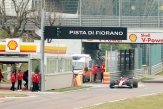
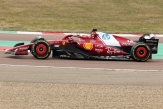
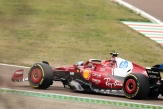
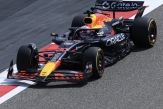
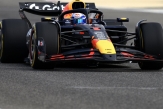
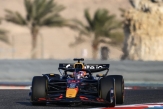

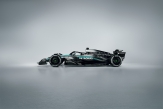
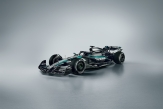
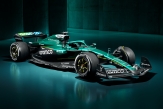
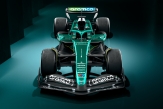
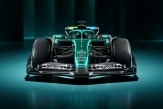
.jpg)
.jpg)
.jpg)

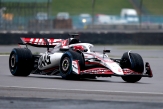

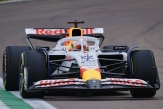
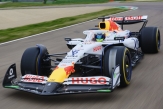
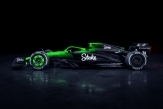
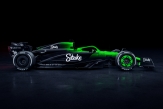

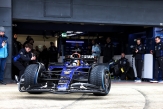
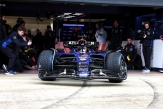
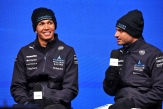

02/12/2025 от Огнян Тенчев (drJeckyll), няма коментари